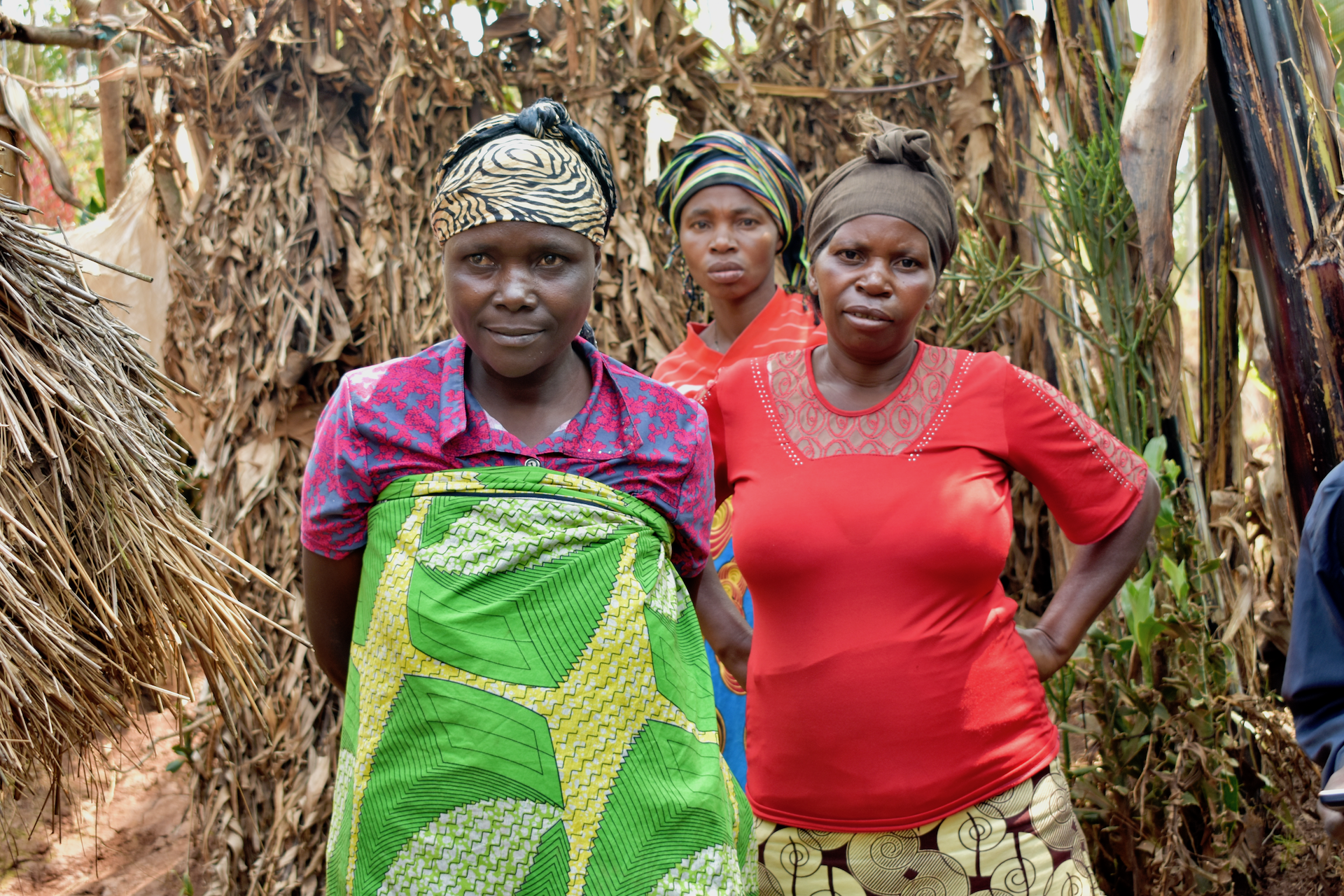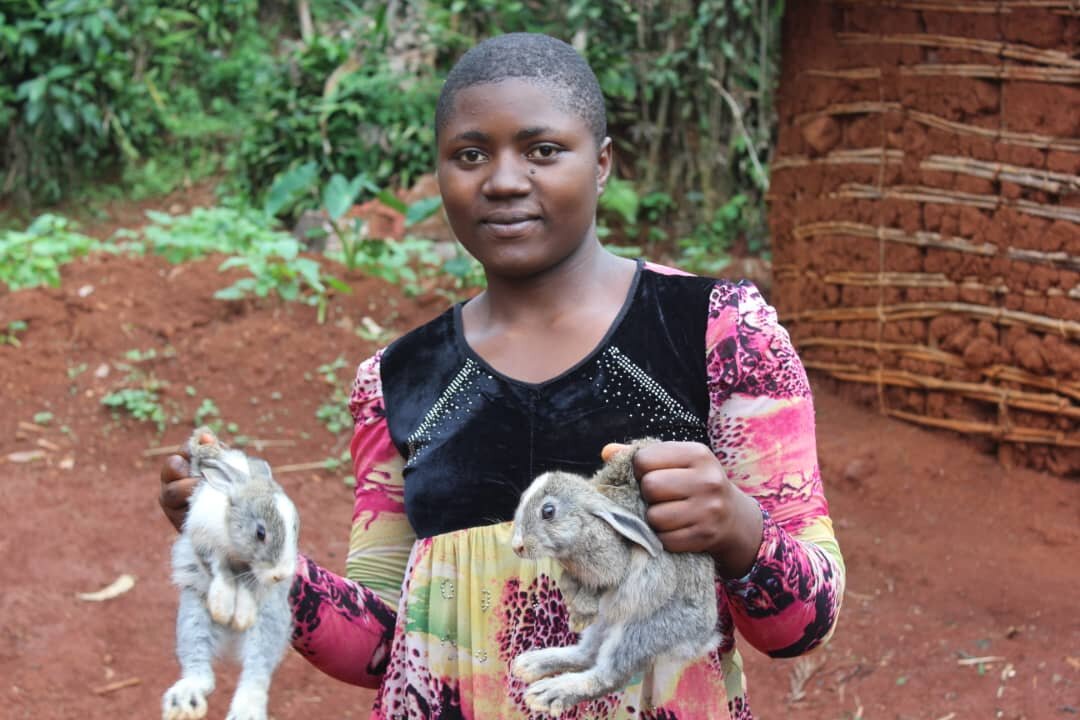
Investing in local people for long-term change
The local PFP team operates three interrelated community-based programs, aimed at stimulating economic activities to help rural families lift themselves out of extreme poverty.
.
Pigs For Peace
Women and families are trained by local field agents on how to raise, nurture, and sell pigs as a living asset and source of recurring revenue. The benefits create a ripple effect that can improve the lives of not only those who participate, but everyone around them.

why pigs?
Pigs are common to the area
Do not need large amounts of space and eat virtually anything humans eat, reducing the need to travel
Reproduce twice annually—averaging 6 piglets per breeding
Men in the DRC typically control household decisions regarding the sale of goats or cows (as they are tied to the dowry system), women can make independent decisions about the purchase, breeding, and selling of pigs
Culturally not taboo as in other nearby Muslim communities
Produce organic waste that can be used as fertilizer to improve agricultural yields
how the program works:
Household participants agree to a loan of a female piglet, build a raised pigpen with locally-sourced materials, a compost for capturing animal waste, and nurture the young pig to maturity.
Additionally, participants agree to actively engage with other PFP participants in their community, attend group meetings, and monitor the health of their pig(s).
Once their pig bears offspring, the household reimburses PFP two piglets; one piglet to repay the original loan and one as “interest” on the loan to allow the program to pay-it forward and expand to other households and villages.
Those participating in the program receive ongoing support from field agents, veterinary care and vaccines, and learn about other income generating practices such as sustainable agriculture and animal meat commercialization.
positive outcomes of pig farming
Funds from selling a living pig or butchered meat products can help fund essential family needs (e.g., school fees, healthcare, food, clothing) repair housing, acquire land for agricultural production, and invest in livestock or other business activities. Some have reported using money to support the larger community.
.
Rabbits for Resilience
As part of a broader strategy to promote income generating activities with adults, motivated adolescent youth can participate too, further supporting their family and gaining entrepreneurial skills by learning how to raise and sell rabbits.

why rabbits?
Rabbits tend to be relatively easy for youth to raise, while participating in school, family chores, and other community activities
They require small amounts of food that is widely available in villages
They reproduce frequently, multiplying their income potential
There are no cultural taboos, age, or gender-based responsibilities for raising/selling rabbits
They can provide a good source of protein promoting food security for the youth and their family
They can be easily sold or traded for other goods
How the Rabbits for Resilience Program Works
Interested boys and girls (~10-15 years old) in PFP families receive a female rabbit as a loan and asset for them to raise with permission of parents.
Participants are mentored in building a rabbit cage with locally-sourced materials, composting, and nurturing the young rabbit to maturity.
When the rabbit provides offspring, youth reimburse two female rabbits to PFP to pay it forward and provide loans to other youth in the same or neighboring village.
Participating youth also become positive role models for siblings and other children throughout the community.
POSITIVE OUTCOMES OF RAISING RABBITS
Adolescents are motivated to participate with the hope of selling a rabbit to help pay school fees, purchase a school uniform, and fund supplies for themselves and siblings. They also invest in other businesses, like selling pens/notebooks to students at their schools, or to save up for personal items. This provides both an opportunity to contribute to the wellbeing of their family, and also instills a sense of pride and accomplishment for being able to earn money and make purchases themselves.
.
Butcher’s Marketplace
Beyond simply raising animals, PFP is currently working to build a community-based butchery to better preserve and transform meat products, creating a marketplace (and elevated income opportunities) by selling value-added meats back to the community.

why a butcher’s MARKETPLACE?
Provides further income generation potential
Improves the shelf-life and sanitary conditions by selling preserved meat products
Motivates program participants to raise animals until they reach an optimal age/size for processing
Creates greater access to protein throughout the community
Introduces a means to transport and sell to nearby urban areas
Provides a physical hub for further education & outreach
positive outcomes of the BUTCHER’S marketplace
Butchered meat products provide further incentives and income potential for those participating in the livestock raising programs, and fosters a supply chain within the community. New revenue generated through the public sale of meat products will also fund further growth and expansion of the PFP platform to other rural communities in need.
.
GUIDE TO PFP CONGO
An overview of PFP Congo’s practices and procedures, working with rural communities throughout the Kivu region of Eastern DRC. Currently only available in French. English version coming soon.


















